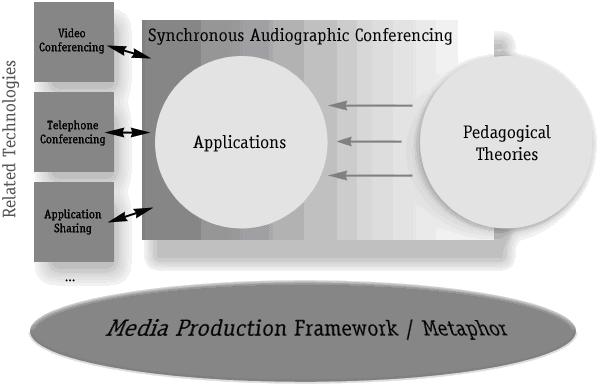
Project Director
Sara de Freitas

Project Manager
Tim Neumann
Project Details
2006-2008
Funder: CDE, University of London
Keywords
audiographic conferencing, multimodal learning,
e-learning
|
MoSAIC: Models for Synchronous Audiographic Interactive Conferencing
This project focuses on synchronous audiographic web conferencing (SAC) as a delivery tool and aims to develop a set of pedagogic application models for its use in distance education.
This project promotes SAC as a delivery mode for distance education, representing a technology that is readily available, but currently underused. It aims to supplement the portfolio of remote delivery methods by taking advantage of a multimodal, media-rich technology that has a high potential to reach out and draw in a wider range of learners through more direct involvement, appeal to different learning approaches and styles, and enhanced social collaborative presence at a distance.

Objectives
-
To identify the current scope of SAC provision and related technologies at the University of London
-
To review pedagogical theories for their use in synchronous media-rich teaching and learning contexts
-
To develop and evaluate a set of pedagogical models for a range of different SAC application scenarios in the context of distance education
-
To design and create guidelines and toolkits supporting the use of SAC
-
To examine pathways for an advisory service on SAC
The project will use a range of different methods attached to five work packages:
- Scoping. The scoping exercise reviews the level of provision of SAC and related technologies at University of London Colleges and Institutes by identifying and surveying relevant stakeholders and courses.
- Pedagogical models for SAC. A systematic review of literature is carried out, followed by a synthesis of findings, which are then mapped to the specific requirements of SAC.
- User testing. Pedagogical models are tested on identified user groups in a series of SAC sessions. The tests are evaluated to establish the relevance and value of the pedagogical models.
- Toolkits and guidelines. Results from a review of existing practitioner guidelines are synthesized and matched to the models from WP2. Exemplary toolkits are assembled based on these findings and following market research.
- Advisory service. Findings, guidelines, session archives and materials are collated for inclusion into a resource website. Training structures and an initial business model are designed for establishing a sustainable advisory service.
|